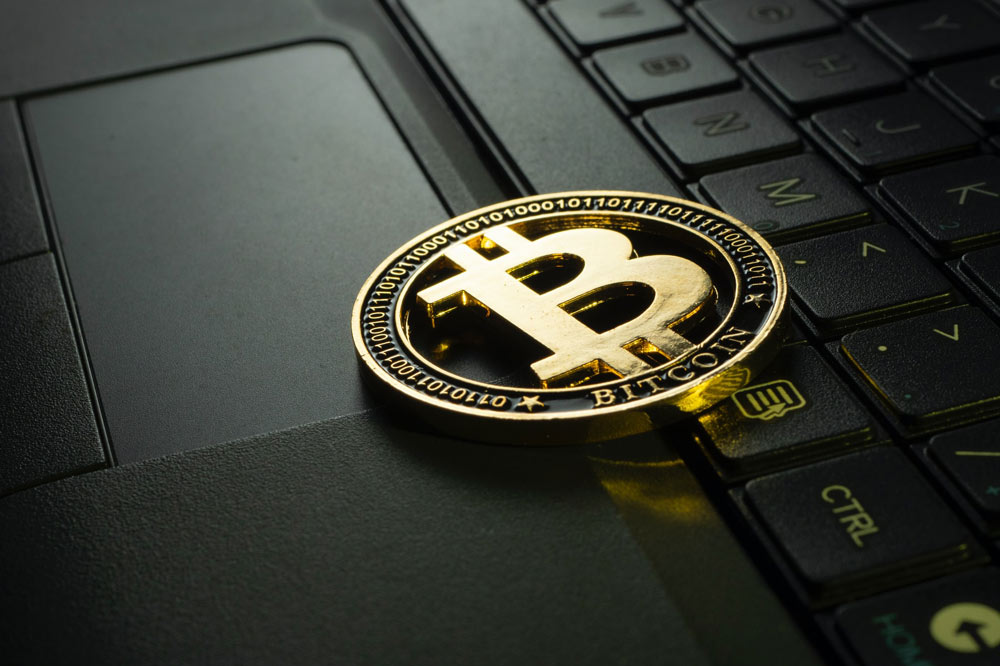Bitcoin is the most valuable cryptocurrency to date. It has a large daily trading volume and high liquidity.
Another market leader is Ethereum. Smart contracts on its blockchain have grown into a decentralised movement for finance. DeFi allows holders of ERC-20 tokens to take out loans and receive interest.
Now, wrapped bitcoin, or WBTC, is attempting to marry the liquidity and value of bitcoin and the functionality and innovations of DeFi.
We will look at wrapped bitcoin and DeFi and see how they can benefit each other today and in the future.
What Is Wrapped Bitcoin?
Bitcoin (BTC) is native to the bitcoin blockchain. This means that in its current state, users cannot use BTC outside of the network. For example, a user cannot use BTC on other blockchains like Ethereum or TRON.
Though, there is a method to deploy BTC on other blockchains. Bitcoin wrapped takes BTC and converts it into an ERC-20 token. This token represents a user’s bitcoin but has no value outside the Ethereum blockchain. Once a user wraps their BTC, it becomes wrapped bitcoin. They need to convert their wrapped bitcoin back into BTC when using it on other platforms.
Wrapped Bitcoin DAO
There are two token wrapping methods, but wrapped bitcoin is centralised with a DAO. It entails having a custodian handle the wrapping process. Here a user sends their BTC to the custodian, and then the custodian mints the wrapped bitcoin with a 1:1 peg with the original cryptocurrency (1 BTC = 1 WBTC).
The merchant issues a burn request if a user wants to retrieve their original BTC. This involves cutting the supply of wrapped bitcoin to maintain a 1:1 peg. Accordingly, the merchant burns the wrapped bitcoin and sends the original BTC to the user.
In this method, the merchant facilitates the wrapping process. The DAO (Decentralized Autonomous Organization) performs the custodial duties for wrapped bitcoin. BitGo, Kyber, and Ren are the main partners in this DAO. A multi-signature contract controls merchant duties in the DAO. They perform the burning and minting processes.
Custodians hold onto the deposited BTC and oversee wrapped bitcoin issuance. An on-chain Proof of Reserve protocol controls the overall distribution of WBTC in the DAO.
Trust Model
A few protocols in the wrapped bitcoin DAO mitigate fraud and lost funds by other means.
Firstly, there is no contact between the user and the custodians. A user needs to contact a merchant to receive wrapped bitcoin.
Next, there are quarterly audits on the network. External third parties verify that minted tokens match the stored BTC held by custodians. The network can show its proof of reserve by posting signatures from trusted addresses on the network.
What Is DeFI?
Decentralised Finance (DeFI) is a move away from the centralised finance system. It is a collection of financial applications that exist on blockchains. DeFI attempts to make finance more open-source, permissionless, and peer-to-peer (P2P). DeFi users would ideally have complete control of their assets without a central authority to regulate and monitor their funds.
Currently, most DeFi applications run on the Ethereum blockchain. This allows for interoperability between these applications. They can communicate with each other and perhaps provide new financial services through collaboration.
DeFi Use Cases
DeFi applications offer various financial services to users who might not have access to a bank. They offer borrowing and lending, monetary banking services, and decentralised marketplaces. There are also on-chain decentralised exchanges (DEXs) that do not require a central authority.
For example, borrowing and lending with DeFI allow users to receive loans without a credit check. They can also collateralise their cryptocurrencies. Another huge benefit is that users receive their loans almost instantly.
DeFI could also provide banking services with stablecoins. Users can get mortgages through smart contracts. This would remove the hassle of dealing with an intermediary when applying for a mortgage.
Additionally, DeFi insurance could lower premiums if the risk is distributed across many users and without a middleman.
Finally, DeFi allows for decentralised marketplaces. Here traders do not rely on central entities to set prices. Instead, they can use Automated Market Makers (AMMs). These algorithmic protocols ensure that prices on a specific platform stay in line with trader sentiment.
Furthermore, DEXs have lower fees than centralised exchanges, and many DEXs allow users to trade crypto directly from their wallets. This means it is more secure than centralised exchanges.

Disadvantages Of DeFi
Although many see DeFi as the next step in popular finance, it still has some creases to iron out.
Firstly, blockchain technology relies on cryptographic means of verification. Miners and stakers need to use their computing power to verify transactions. This takes time, and transactions tend to be slower than centralised alternatives.
Accordingly, there have been some attempts at speeding up transactions. The Bitcoin Lightning Network, Sharding, and side-chain implementation are a few examples. Other blockchains are also faster than others, but there is still a way to go before we have faster DeFi applications.
Next, DeFi applications give users ultimate control over their assets. They do this by allowing the blockchain to perform immutable processes. This might be a problem for users if they do not make the correct choice. For example, they could have used too much collateral for a loan. This process cannot be reversed. It is also quite difficult for developers to reduce user error.
Also, DeFi applications generally require users to perform advanced functions. They might need to stake their holdings in a specific liquidity pool or buy a specific token to use an application. This type of user experience does not translate to an attractive platform. It might scare away new users.
Lastly, there are numerous DeFi applications on the Ethereum network alone. Other blockchains also offer DeFi services, so it might be difficult for a user to find the best application. This application congestion might also discourage new users from using these DeFi platforms.
Four Advantages Of WBTC
Wrapped bitcoin is a great entry point into the DeFi space for bitcoin holders. It allows them to experience the benefits of other blockchains without using their native token.
1. Wrapped Bitcoin As Collateral
DeFi borrowing and lending platforms stipulate that borrowers must put up collateral to receive a loan. The collateral usually comes in the form of a cryptocurrency. In this case, we will use wrapped bitcoin.

Before wrapped bitcoin, borrowers needed to use ETH (Ether) as collateral because the lending platform is on top of the Ethereum blockchain. But now, borrowers can use their wrapped bitcoin as collateral. This is advantageous because if a platform only uses one token for collateral, it might increase price volatility for that token.
2. WTBC Interest And Yield Farming
These platforms use AMMs and similar algorithms to determine prices. In addition, these platforms incentivise lenders to put up crypto for borrowers. They can earn interest if they deposit their crypto into a liquidity pool.
Moreover, DeFi lending platforms typically have higher interest rates than centralised platforms. For example, lending wrapped bitcoin in a liquidity pool on Compound is under 3%. While earning interest at a bank would be around 0.01%.
Lenders can also perform yield farming. This refers to lenders entering and exiting various liquidity pools to profit from interest received from loans.
3. Wrapped Bitcoin Governance Tokens
Various DeFi platforms have given their users incentives to use their applications. These, of course, include receiving interest from liquidity pools. But they have also issued governance tokens.
For example, a famous governance token Maker (MKR) allows holders to vote on changes to the DAI stablecoin protocol. These changes range from raising the debt ceiling for borrowers or using a new consensus model for verifying pools.
Now, WBTC holders can deposit their holdings into a liquidity pool. They can then receive interest in it and obtain a governance token for voting rights.
4. Wrapped Bitcoin Margin Trading
Margin trading involves a trader borrowing money to trade. Traders have the option to go long or short with their trades. The former involves buying an asset like wrapped bitcoin and waiting for its price to increase, then selling it. The latter, shorting, involves gaining a profit from a price decrease. It is a tricky practice because the more a trader puts up for trading, the more they can lose.
Wrapped bitcoin holders can perform margin trades on Fulcrum. They have access to stablecoins, ETH, and other ERC-20 tokens.
Wrapped Bitcoin And The Future Of DeFi

Wrapped bitcoin gives holders access to a host of DeFi applications, but it also provides the DeFi system with benefits.
Liquidity
Initially, opponents to DeFi questioned if its various applications and platforms could maintain liquidity. If users went from one platform to another because of liquidity, the DeFi space would be unreliable at best.
There were a few solutions to the liquidity problem. Firstly, platforms started liquidity pools, giving users a reason to add to DeFi’s liquidity. Furthermore, yield farming has also boosted DeFi’s liquidity.
Another solution would be to wrap bitcoin. Bitcoin is currently the biggest and highest-valued crypto asset available. Over the years, bitcoin whales have emerged and now own large amounts of bitcoin. With wrapped bitcoin, they can use their purchasing and buying power to increase DeFi’s liquidity drastically.
To illustrate, if 5% of bitcoin’s market cap enters the DeFi space, it will increase DeFi’s market cap by 35%.
Also, WBTC has been performing well on DEXs. It currently has an average trading volume of $199 million. This means that wrapped bitcoin has garnered interest from users, and the future looks bright.
Cross-Chain Functionality
Merchants can perform atomic swaps between BTC and wrapped bitcoin. This gives bitcoin more utility because bitcoin holders can use the wrapped currency to pay for services usually reserved for ERC-20 tokens.
Furthermore, it aids bitcoin users with transaction times. As we mentioned, some blockchains are faster than others. Accordingly, with wrapped bitcoin, users can choose the best DeFi option.
Additionally, dApps also benefit from wrapped bitcoin. Uniswap and Compound instantly gain access to the high liquidity of bitcoin without needing to change protocols. This added boost to liquidity would increase dApps potential to attract investors to their platforms.
Lastly, wrapped bitcoin allows users to leverage their holdings with smart contracts. This will enable them to deploy contracts and dApps using WBTC.
Two Token Ethereum

At the beginning of Ethereum, users saw ETH as a transaction token. This means that users paid ETH to run smart contracts and verify transactions. Since the advent of DeFi, many users now see ETH as a cryptocurrency.
Accordingly, WBTC has the liquidity and high trading volume to become Ethereum’s currency coin. At the same time, ETH remains the network transaction coin. With this change, ETH might lose some of its value on exchanges. But with WBTC bringing more transactions to dApps, more users would need ETH to process transactions.
In summary, WBTC could provide Ethereum with an increase in liquidity and a currency coin.
WBTC Side Chain
Ethereum is the most popular DeFi network in the crypto industry. Due to its popularity, it can get congested with high traffic volumes. For example, CryptoKitties stalled Ethereum when it became highly popular.
WBTC’s DAO wants to mitigate the congestion by running a side-chain to increase transactional throughput. It will run on the proof of authority protocol. WBTC on the mainnet and side-chain will be pegged with a 2-way multi-sig wallet. This would keep fees low and transactions faster.
Final Thoughts
DeFi is a blossoming alternative to centralised finance. Now, users from around the world can have access to financial services without a central authority or long-winded credit checks.
With wrapped bitcoin, more users can use dApps, increasing DeFi’s liquidity and solving a few scalability problems on the Ethereum network. In summary, WBTC and DeFi could have a successful partnership.
















